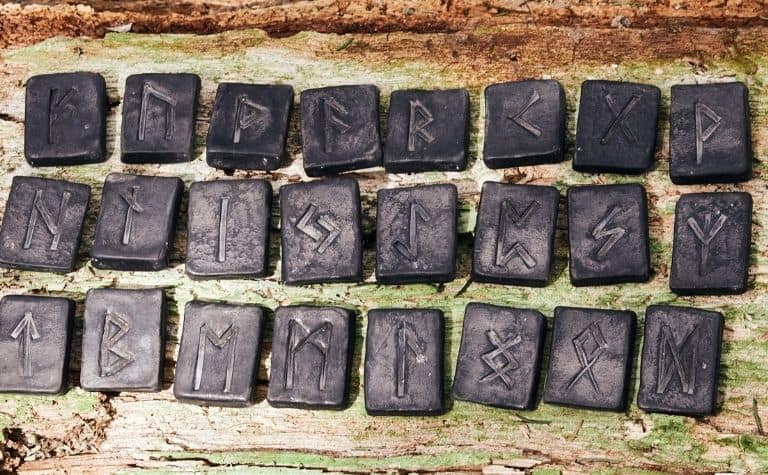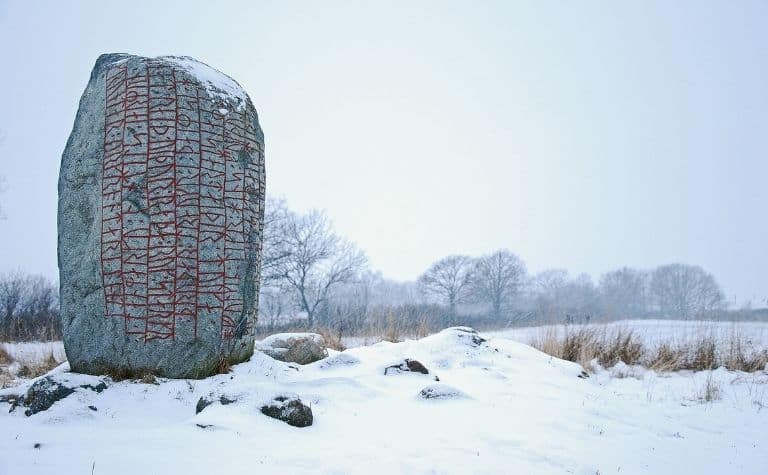The belief system commonly referred to as “Norse paganism” was prevalent throughout Europe before the arrival of Christianity.
In recent decades, some people have re-discovered Norse paganism, adopted its beliefs, and some of its traditional practices.
Prayer is important to Norse pagans. Communicate with the gods is a way adherents worship Norse deities and curry their favor.
Sometimes prayer in Norse paganism consists of asking for blessings and protection. Other times it consists of paying homage to various deities.
The rest of this article will discuss the Old Norse religion, how it influenced the every-day lives and prayers of those who are devoted to it, and a small group of people in the modern world are embracing the ancient faith.

What is the Old Norse Religion?
Norse paganism, also known as the Old Norse Religion, was prominent in Northern Europe during the Proto-Norse Period from the 7th to 15th century A.D.
As Christian churches from southern and central Europe sent missionaries and church planters into Scandinavia, some northern Europeans adopted the faith of Jesus Christ.
Other Scandinavians added Christ to the Norse pantheon, placing him alongside Odin, Thor, Freya, and other Norse deities.
Still, other medieval Scandinavians retained their Norse beliefs and rejected Christianity.
When Christians arrived in Northern Europe to evangelize the Vikings, there was no particular name for the Norse belief system.
People at the time did not use the word “religion” to describe their faith. Instead, they called it “the old way” in contrast to Christianity, which was the new way. (Also see Scandinavia’s Conversion to Christianity)
After Christianity spread throughout Northern Europe and in many ways supplanted Norse paganism, the old Scandinavian worldview was relegated to the convictions of a small remnant of people.
Though many Scandinavians, and even some Vikings, converted to Christianity, erected Christian crosses, and built Christian churches, a few clung to their allegiance to Norse gods and goddesses. (Also see 25 Norse Gods to Know)
Unlike Christians, who believe that there is one God who exists in three persons (Father, Son, and Holy Spirit), Norse pagans believe in numerous gods and goddesses.
The two most prominent gods that Norse pagans worship are Odin and Thor. Norse mythology also includes lesser creatures like giants, elves, and dwarves. (Also see The Giants of Norse Mythology)

How Do Norse Pagans Pray?
Today, there are almost 2,400 people who practice the Old Norse Religion. The majority of them live in Iceland. [2]
Many Norse pagans don’t speak prayers of petition in a conversational tone with Norse gods, but they do attempt to communicate with them for different purposes. (Also see Is the Norse Religion Still Practiced Today?)
Norse pagans often attempt to communicate with Norse gods outdoors. At Lilla Ullevi in southern Sweden, researchers found an area used for Norse rituals that were covered with stone, silver objects, and cutlery.
Scientists believe that rituals of Norse paganism occurred in places such as in fields, on river banks, near lakes, and under trees.
In ancient times, Norse pagans would perform animal sacrifices while talking or praying to the gods.
Scientists have found Old Norse pagan temples in Sweden, Iceland, and Norway.
From the discoveries of the temples, it’s known that Norse pagans had special places to worship their gods in addition to their outdoor rituals.
Today, many Norse pagan worshipers gather at their temples, such as the Manheim (hof) in Denmark, to pray to and worship Norse deities. [3] (Also see How Do People Convert to Norse Paganism?)
Today Norse pagans perform many of the same rituals as the Vikings when worshiping Norse gods. These rituals include:
- Praising the gods
- Making offerings
- Drinking a toast
- Eating together in a feast
The toast may be dedicated to any god of their choice, depending on what they are seeking. (Also see What Did the Vikings Drink Out Of?)
Prayer to the gods
Norse pagans today worship their gods, in part, by focusing their thoughts on the deities or by chanting prayers around campfires with other believers. (Also see Viking Recipes: How Did the Vikings Make Ale?)
In the Old Times, Norse pagans would offer mead to the gods. This was a fermented alcoholic drink made with honey, water, and sometimes fruits.
In place of mead, when Norse pagans today give offerings to the gods, they can do so with wine or beer. This offering is not meant to appease the gods but rather to express their thoughts and devotion towards them.
Many Norse pagans approach the gods through chanting and offerings. The Vikings, for example, called upon Norse gods such as Odin. Today, Norse pagans do the same.
Practitioners of Norse paganism will summon a god by calling his name and making an offering. (Also see 10 Norse Goddesses to Know)
According to legend, Odin loves poems. With that in mind, some practitioners choose to read a poem to express admiration.
Who Do Norse Pagans Pray To?
Norse pagans pray to many gods and goddesses, though all Norse pagans worship Odin. The devotees also talk to other Gods, such as:
- Thor (God of thunder)
- Freyr (God of peace, rain, and sunshine)
- Freyja (love and fertility Goddess)
- Sif (wife of Thor)
Adherents wishing for prosperity make a toast to fertility gods, Njörd and Frej. A woman who wants to become pregnant or find love may make a toast to Freyja.
Someone who seeks more strength may make an offering to the God, Thor. (Also see Freya: Norse Goddess of Love, Witchcraft, and War)
Do Pagans Worship Norse Gods?
Pagans worship Norse gods, but many believers claim that they do not “pray to” or kneel before their gods. People mostly connect with Norse gods by summoning them and giving them offerings.
In ancient times, Norse pagans would carry out a “blot,” which refers to sacrifice of worship.
Devotees would offer their blots to gods, land spirits, or ancestors, which were followed by a big feast, usually consisting of meat from pigs or horses. Many Norse pagans today perform their blot at home or in the outdoors.
What is a “blot”? The word “blot” comes from the Old Norse word for sacrifice.
Though it sounds like the English word “blood,” the term does not have that association. “Blot” in Old Norse comes from the word for strength and does not refer to the blood of a person or animal.
Also see Is Norse Religion Older Than Judaism? to learn more.
Final Thoughts
Norse pagans believe in many gods and goddesses, and they can pray to whichever best fits their needs.
